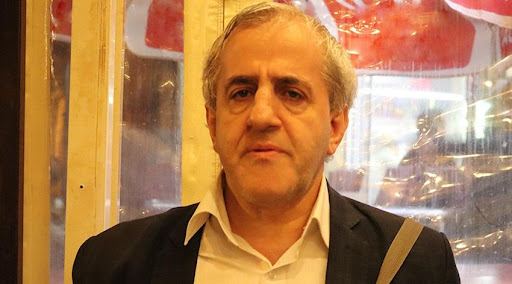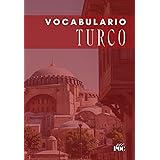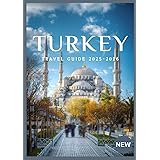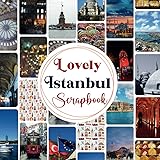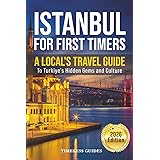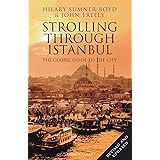by Müfid Yüksel, Writer
Saturday, Mar 18, 2017
At first glance, such a title may seem strange to the reader. It can be asked, what kind of a relationship is the connection between Kurds and Rumelia/Balkans? Over a century of experience of the nation-state has alienated different segments of society from each other so much that such connections, which have been so strong in history, can be found strange. Especially, the ethnic problems, which increased and exacerbated in the 90s, carry this alienation to its peak.
Just 25 years ago, when Selami Yurdan, whose family was born in Ağrı-Patnos and originally from Yako village of Şatak Subdistrict of Bitlis, went to Bosnia and was martyred in 1992, nobody said to him: “You are Kurdish!” He did not say to you, “What about the Bosnian case?” Once upon a time, when Zaza youths from Bingöl were martyred in Afghanistan and Bosnia, this question was not asked.
It is sad to note that such discourses have been spoken aloud in recent years. I’m one of the people who gets the most out of it.
In 1908, After the proclamation of the II.nd Constitutional Monarchy, İsmail Bey from Herzegovina and Ahmed Şerif Bey from Herzegovina, together with Bedri Bey from Malatya, published the newspaper “Orient and Kurdistan”, and no one told them, “You are Bosniaks from Herzegovina. Why you talk about the Orient and Kurdistan”. Even Bediuzzaman’s articles were published in that newspaper. Because even at that time, Orient/Kurdistan and Bosnia-Herzegovina were very close to each other as parts of a whole in terms of spirit and civilization, although not geographically. On the same dates, while Bediuzzaman Said-i Kürdî/Nursi was going to Thessaloniki and giving his famous speech in the square, no one was yelling at him, “You are Kurdish, you are not from Rumeli/Thessaloniki”. Bediuzzaman accompanied Sultan Mehmed V Reşad to Kosovo at the head of a Kurdish delegation during his visit to Rumelia.
When the historical sources are examined, the adventure of the Kurds in the Ottoman and Rumelia goes back to the founding periods of the Ottoman Empire. Mevlana Tâcuddin El-Kürdî, one of the Kurdish scholars who came to Bursa in the time of Orhan Gazi and one of the students of, Allama Kadi Siracuddin El-Urmevi, became the professor of the Süleyman Pasha Madrasah in Iznik after the death of Davud-i Kayseri. He married another daughter to Çandarlı Halil Hayreddin Pasha. The famous Çandarlı Vizier dynasty is based on Tacuddin El-Kürdi by their mother. Tâcuddin El-Kürdi had a madrasah built in Bursa and a bridge built in Bursa-Kirmasti. (See Taşköprîzâde, Eş-şekâik En-Nu’maniyye, A. Suphi Fırat Neşri, 1985:7-9; Oruç Beğ History, Manuscript, Manisa Provincial Public Library Manuscripts, 45-5506-2; Foil; 12a-b )
There is the following information in the records related to Timurid period regarding the transition of the Kurds to Rumelia.
Timur exhibited atrocities and massacres in the cities and towns he entered during his expeditions to Iraq, Syria, Mesopotamia and Anatolia, the people of those areas escaped from the front of Timur’s army and migrated to the western regions. They even take refuge in Rumelia/Balkans. There are also Arabs and Kurds among those who took refuge in Rumelia.
“The people of the places where he was going to be sentenced fled, crossed the sea and poured into Rûmili. In fact, people from Arabs, Kurds, Turkmens and Anatoli fled and went to Rûmili. The ancients, who have lived that time, have quoted as follows: Who we saw in Rumili, we saw many people, our origins are Arabs, some of them Turkmen, some Kurds, some Anatolians. Some of them told: “Our original was Çağatay”. They escaped and came to Rumili. And besides, these (n) things (reasons) These (n) things have been (reasons) for Rûmili to be a shinlik (festival).” (Anonymous Tevârih-i Al-i Osman, F. Giese Neşri, Breslau, 1922; Shf. 45-46; Publication in Latin Letters, Prepared by: Nihat Azamat, Marmara University. Ed. Faculty Pub. 1992:49; Neşrî, Mehmed Efendi, Cihannümâ, Unat-Köymen Publication, TTK Publications, Ankara, 1987)
The relationship between the Kurds and Rumelia, the relationship between the east and the west of the Ottoman Empire, continued in this way for centuries. Rumelian/Balkan Albanian and Bosnian pashas were beylerbeyis and governors in various provinces and sanjaks of Kurdistan, as in many parts of the Ottoman geography. In fact, there were many Albanian soldiers stationed in that region, especially in Mosul and Diyarbekir provinces. The first of these is the Bosnian Hüsrev Pasha, who was brought to the Diyarbekir Governorship after Bıyıklı Mehmed Pasha.
After Bıyıklı Mehmed Pasha, Karaman governor, Bosnian Hüsrev Pasha, was appointed to Diyarbakır governorship. Hüsrev Pasha, originally from Bosnian, Sokollu family, assumed the duty of Diyarbekir governorship until 935/1528. Hüsrev Pasha became the governor of Aleppo in 938, the governor of Egypt in 941, and the second dome vizier of Kanuni in 943. He died in 952/1545 and was buried in Fatih-Bali Pasha, in Istanbul, in the cesim tomb, which was the work of Mimar Sinan.
Hüsrev Pasha has a mosque, a madrasah and an inn in Diyarbakır, and a mosque in Aleppo.
(Ayvansarâyî, Hadika, 1281:1/64; Ayvansarâyî, Mecmu’a, 1985:115-116; Ayverdi,1955:31-38; Sözen,1971; Beysanoğlu, Diyarbakır History, 1996:2/528-531; Tuncer, 1996:107-126; Ulgen,1989:202)
Later, there is another Bosnian Hüsrev Pasha, who was also a Beylerbeyi in Diyarbekir and Van.
Husrev Pasha – Köse -: He left the Harem-i Hümâyûn and became Ayntâb Bey in 960 (1553), then Beylerbeyi, Damad-i Padishah and Treasurer. In 967 (1560), he became the Iranian ambassador. He became the governor of Diyarbakir in 970 (1562/3) and left in 978. He was the governor of Erzurum in 988 (1580), Diyarbakir again in 990 (1582), Aleppo in 992 (1584), and Van in 994 (1586), and was martyred in the Iranian war in 995 (1587). Müşir and manager, serhat were well-known. He had many works in Diyarbekir, Van and Bitlis. While he was buried in the mausoleum in the courtyard of the mosque in his own name in Van, the Armenians who entered Van with the Russian army in the First World War destroyed the mosque and the mausoleum, exhumed the Pasha’s bones and scattered them. Only this bath, Han gate and a part of the bazaar remained from the works he had built in the city center of Bitlis. The mosque and other works have not survived to the present day. The mosque and other works have not survived to the present day. Among the inns he had built on the Bitlis Rahva road, Başhan and Alaman Hans are still standing. According to the Şerefname, Hüsrev Pasha had these inns built because there was a lot of snow in Rahva and its surroundings, and the people traveling in winter were exposed to heavy snow and blizzard and froze. The masjid built by Hüsrev Pasha in Bitlis-Güroymak (Norşin) is still open for worship.
The Mosque and Tomb in Van have been extensively restored in recent years.
(For Hüsrev Pasha, see also Şerefhân, Şerefname, Persian Text, V. Veliaminof-Zernof Publishing, St. Petersbourg, 1860, Vol.1, Shf. 349-350) In
In addition to these, Canbulat/Canpolatzâdeler from the family of Kilis Kurdish chiefs/mirs have took part in the campaigns of Sultan Kanuni Süleyman in the West, especially in the campaign of Zigetvar, and Hüseyin Pasha became the governor of Bosnia.
In centers such as Diyarbekir, Van and Mosul, Albanian and Bosnian administrators and governors generally served. These are too many to count. Some of the Kurdish mirs and beys or some of their families took part in expeditions in Rumelia/Balkans, and also served as mirmiran/beylerbeyis or governors. Some of them were even given zaâm. Some beys and mir families or members were transferred from their hometowns to Rumelia.
Today, there are still around 200 families/households of Diyarbekir origin in Tetovo/Tetovo/Tetovo, Macedonia. Although they no longer speak Kurdish and their mother tongue is Albanian, many of them were stated to be Kurds, even in their graves. Chief among these is the Yzeiri/Uzeyiri family. Also, there are two Kurdish villages in Kosovo on the border with Serbia, and although they have forgotten the Kurdish language in time, they still use the Kurdish name/surname. Among them, Musa Kurdi was a well-known writer recently.
On the other hand, there were many Albanian families sent and settled as soldiers in the Ottoman period around Süleymaniye, Mosul, Diyarbekir, Van, Bingöl and Adıyaman. Even villages were formed from them. For example, there are still Albanian villages whose mother tongue is Kurdish in Bingöl-Kiğı. In the cemeteries of these villages, there are plenty of rifle depictions on the gravestones/stones. In the Ottoman Empire, tuffing was a profession and class unique to Albanians. In the Ottoman military units, riflemen were mostly Albanians. Albanian villages in Bingöl-Kiğı know that they are Albanian, even though their mother tongue has become Kurdish. There are many well-known families of Albanian origin in Diyarbekir, Harput, Van, Muş and its environs. Former interior minister Abdulkadir Aksu originally came from a family from Albania-Shkodra. Again, some families originally from Kosovo-İpek are known.
From the 16th century on, a significant part of the soldiers in the Ottoman military garrisons consisted of Albanians, as in other regions in the regions stretching from Urmia, Hamadan to Baghdad, Diyarbekir and Malatya. In the 19th century, the same was the case in the new army order established after the abolition of the Janissaries. For a long time, Albanian soldiers/battalions were dispatched from the ports of Thessaloniki and Durres/Durres to the provinces of Hejaz, Egypt, Yemen, Aleppo and Mosul. There are many archival documents on this subject. In the 19th century, a significant part of the soldiers in the military garrisons around Mosul consisted of Albanians.
In fact, the famous researcher Sir Austen Henry Layard, who was also in the Istanbul embassy of Great Britain, wrote about his trips to Mesopotamia and Kurdistan in 1849 in his book “Discoveries In The Ruins Of Nineveh And Babylon” (New York & London 1853) Diza/Amediye He mentions that a part of the Ottoman military garrison in the region consisted of Albanian soldiers and his meetings with their commander İsmail Ağa from Tepelin. (PP.380)
In addition, a significant part of the Kurdish Bey and Mir families, who were displaced from their places due to the policy of centralization, were sent to various centers in Rumeli/Balkans as of the Tanzimat Reform Era in the 19th century. Some of these families are wholly settled in these districts. Miri/chief of Cizre and its environs, Mütesellim Bedirhan Bey and Hakkari Bey Nurullah Bey were sent to Crete, while Lice/Atak Zerraki/Zırki Beys were subjected to residence in Plovdiv and Edirne. Yezdan Sir, Sirvan Bey, was also subjected to residence in Rumelia. There are still many burial witnesses belonging to Lice/Atak, Zerraki/Zırki Beys/Mirs, especially Timur and Recep Pashas, in the Eski Mosque and Beylerbeyi cemeteries in Edirne. Telli İbrahim Pasha, who is also a branch of this dynasty,While some of his family was settled in Trabzon, another part was settled on the Mediterranean coast and Varna-Burgaz.
In addition, there were Kurdish scholars who settled in Rumeli with duties such as kadi, regency, professorship. There were even some Naqshbandi sheikhs besides these. Nakşibendi-Hâklidi Sheikh Erbilli Mehmed Latif Efendi, one of the relatives of Sheikh Abdulfettah El-Akri, one of the successors of Mevlana Khalid-i Bagdadi, settled in Thessaloniki and published his work “Vesile” about the succession of Naqshbandi-Khalidism in Thessaloniki three times. Besides, Sheikh Ahmed Efendi from Eğriboz is one of the hulefa of Mevlana Halid-i Şehrezori Baghdadi and was buried in İzmir Karşıyaka. Again, a Nakşibendi-Khâlidî Lodge in Chania, Crete continued its activities until the population exchange of 1924.
Sultan II. Abdülhamid Khan’s Guard Regiment in Yıldız Palace consisted largely of Kurdish Cavalry, Albanian Riflemen and Arab guards. During the ceremonies, Kurdish cavalrymen of the Guard Regiment were on the right side of the Sultan, and Albanian riflemen on the left. Even these symbolized this historical closeness.
It is possible to multiply similar examples. Despite all this, the trauma and alienation created by the nation-state experience, in which political and ideological boundaries sharpened, caused great ruptures, interrupted our uninterrupted civilization by dividing our geography, and alienating the communities that had been in the same civilization for centuries, almost brought them face to face.
How heavy the bill of this alienation is for the aforementioned communities can be seen in all respects. We must engage in efforts to reverse the alienation of the nation-state experience as a result of centuries of forced confinement between the Meriç and Aras rivers. Between Kurds and Rumelia/Balkans, between Rumelians, between Kurds and Albanians and Bosnians, throughout our history, we have to re-strengthen the natural/historical ties that existed even in the recent Bosnia and Kosovo wars. From the Balkans to the Caucasus, Mesopotamia and Bilâd-ı Etrak, to Ekrâd and Arab, and even to Persia, the peace of this entire geography, of the Ummah, definitely depends on the strengthening of these ties.

